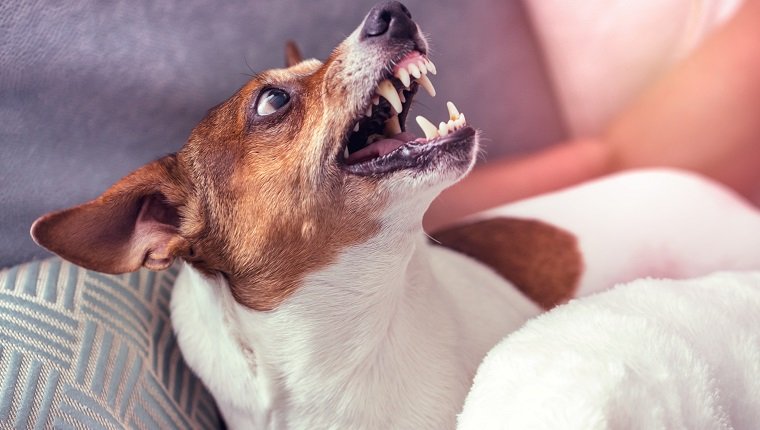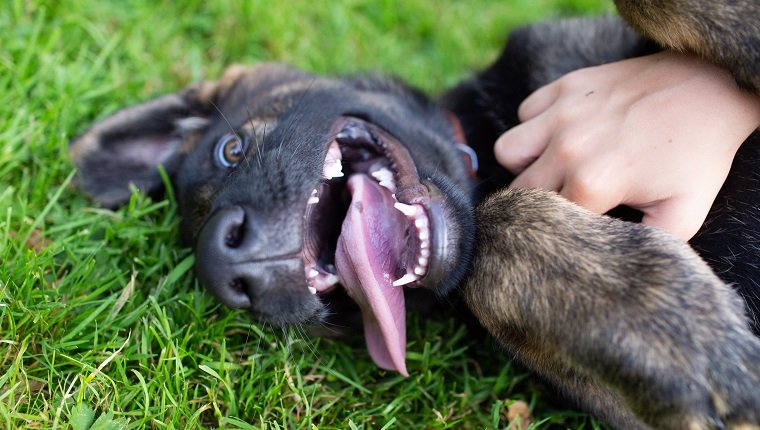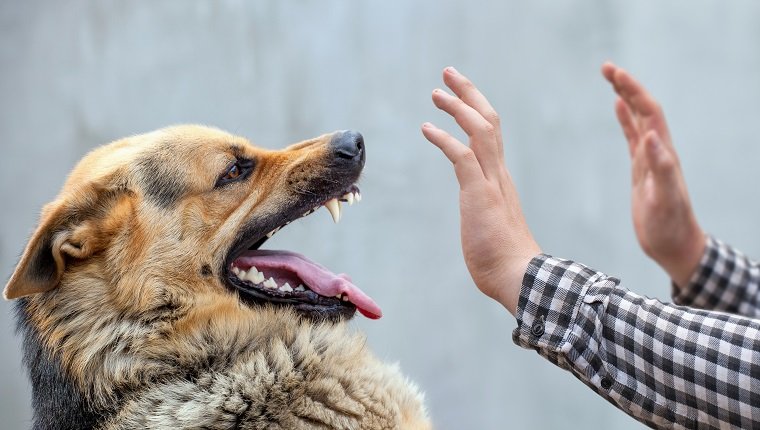There are many types of aggression in dogs, but perhaps none is more worrisome than aggression directed at humans. Man-made attacks can be extremely dangerous, not only for people who may be injured, but also for dogs that may be put down as a result of aggressive behavior.
While genetics play a role in a dog’s aggressive tendencies, the environment also has a lot to do with it. The best way to combat aggressive problems is to make your dog social from a young age.
However, when we bring dogs home, we don’t always have to choose their age, especially when we adopt a dog from a shelter. If this is the case with your dog and they show aggressive tendencies, you will need to contact a professional behaviorist in addition to doing some training yourself.
Important: The following only provides a general overview of dogs’ aggression towards people. If your dog is already aggressive, especially towards people, it is important to get help from a reputable behaviorist as soon as possible.
Aggression is often a failure of communication
While it doesn’t seem to do any good for domesticated dogs, dog attacks once had a very necessary purpose: to hunt for food and protect territory and other group members.
For modern dogs, aggression towards people still surfaces due to real or perceived threats. And it often worsens because our two species are not born to speak the same language.
In fact, you can probably say to a dog very clearly in human language, “Hey, I like you! Let’s be friends,” but it may translate directly to dog language, i.e., “I have potential danger and seek dominance.” ”
Consider this classic example: a man walking straight to a dog. He stared into the dog’s eyes and patted the top of his head. For dogs, each of these actions suggests confrontation, and you can expect him to react accordingly.
Of course, the reverse is also possible. A dog may think they’re sending a clear message and they want you to back off, but if you can’t read their signals and warning signs, that won’t make any sense.
Attending your dog in obedience classes or getting help from a professional trainer will help you communicate more clearly with your best friend – and bond more deeply.
Reasons why dogs attack people

Aggression stems from anxiety and fear. Something unfamiliar comes out – be it an object, a person, or another animal – and your dog interprets it as a threat.
Genetics certainly influence a dog’s ability to tolerate new or unexpected things, and some breeds are naturally more frightened than others. For example, on average, rat terriers are more anxious, while Labradors are more easygoing. But variety is only part of the equation.
Lack of socialization is another big problem, which is why it’s crucial to expose puppies to as many types of people, animals, sights, and sounds as possible before they reach 14 weeks of age.
Allowing a puppy to adapt to new people and environments during his impressionable early puppy years is more likely to take it in stride as an adult. Otherwise, they may show fear and aggression.
Abuse is another factor. Dogs abused by humans will be distrustful (and rightfully so) and unstable. Punishing such dogs – physically or verbally – because aggression only adds more stress and anxiety, which exacerbates the problem.
How to deal with the problem
If your dog exhibits aggressive behavior, guidance from an experienced dog behaviorist is crucial.
Ignoring the problem will only lead to trouble: a bite from your dog, let alone an actual bite, can lead to strained relationships with friends, relatives, or strangers – after all, none of them know how cute your dog is when they’re alone at home with you.
Desensitization is the most common treatment for aggression. It starts by breaking down your dog’s aggressive triggers into their most basic discrete components.
One small step at a time, you combine positive reinforcement, such as praise or hospitality, with triggering stimuli, gradually creating a pleasant connection between the two.
Successful desensitization requires time, patience, and expertise. Talk to a behaviorist before you begin for detailed guidance.
At the same time, manage your dog’s environment and don’t push them to the point where they can tolerate it.
If bearded men pressure them, don’t try to take pictures of them on Santa’s lap, even if it makes for a cute holiday card. If they feel anxious about your child, manage them carefully around your child – or avoid them altogether.
Children are notorious for over-enthusiastic responses to dogs — invading a nervous dog’s “space” is not a good move — or over-fear, which your dog will accept and respond to, often their own aggression based on fear.
Keep in mind that many adults are also afraid of dogs. Your dog will sense their fear, which can make your pet uncomfortable.
Remember that yelling, hostile body language, and body modification will only exacerbate your dog’s anxiety and aggression. These have never been effective technologies.
For your own safety and that of others, be aware of signs of aggressive behavior:
- Raised burrs
- Exposed teeth and/or curled lips
- growl
- Maintain eye contact
- catch
- The body hardens
How to prevent attacks on people

Although there is no guaranteed way to prevent aggression, there are some basic steps that will greatly reduce the chances of its development:
- Get your puppy social and expose them to the outside world as much as possible, preferably before 12 to 14 weeks old.
- Let them adapt to manual processing at a very young age. Touch their paws, tails, ears, and mouths.
- Neuter or neuter your dog early – this will greatly reduce hormone-driven aggressive behavior.
- Always treat your dog with kindness and respect, using positive reinforcement to train good behavior. Physical correction, intimidation, and isolation only encourage aggression by increasing anxiety in dogs.
- Learn as much as you can about your dog’s background and behavior before adopting from a shelter or rescue organization. Ask them if they have been tested for aggression.

